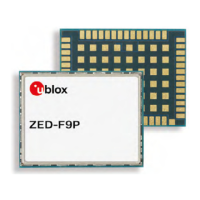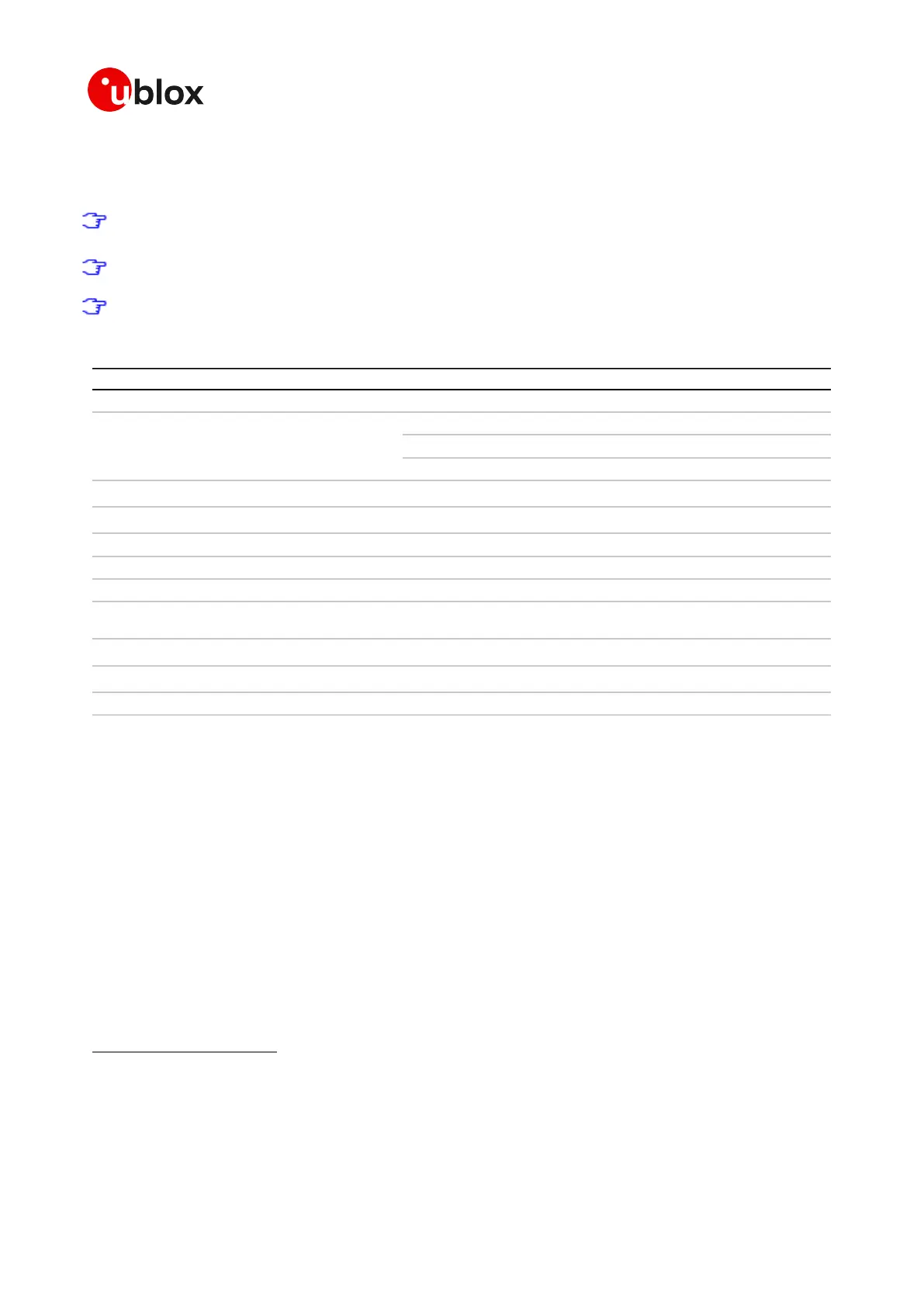ZED-F9P-Integration Manual
UBX-18010802 - R01
7 Antenna Page 59 of 64
Objective Specification - Confidential
7 Antenna
u-blox highlights that the use of an active antenna is a pre-requisite for meeting the stated
RTK performance
A suitable ground plane is required for the antenna to achieve good RTK performance.
Location of the antenna is critical for reaching stated and good RTK performance, not
suitable for under vehicle dash location, rear view mirror location, etc.
L1 + L2 active antenna required specifications
Parameter Specification
Antenna Type Active antenna
Typical gain 30 dB
Maximum gain 40 dBActive Antenna Recommendations
Maximum noise figure 2 dB
L1 band antenna gain
1
1559 - 1606 MHz: 3 dBic typ.
L2 band antenna gain
2
1197 - 1249 MHz: 2 dBic typ.
Polarization RHCP
Axial Ratio 2 dB max at Zenith
Phase Center Variation <10 mm over Elevation/Azimuth
Group Delay Variation in-band
3
10 ns max @ each GNSS system bandwidth.
Note: Inter-signal requirement 50 ns max.
EMI immunity out-of-band
4
30 V/m
Out-of-band
5
Rejection
40 dB typ
ESD Circuit Protection 15 kV human body model air discharge
Table 11: Antenna Specifications for ZED-F9P modules
The antenna system should include filtering to ensure adequate protection from nearby
transmitters. Care should be taken in the selection of antennas placed close to cellular or WiFi
transmitting antennas.
7.1 Stacked patch antenna
The typical L1 + L2 antenna will be a stacked patch antenna design. There will be a discrete L1 patch
on top of a L2 patch.
1
Measured with a Ground Plane d=150 mm
2
Measured with a Ground Plane d=150 mm
3
GNSS system bandwidths: 1559… 1563 MHz; 1573… 1578 MHz; 1598… 1606 MHz; 1192… 1212 MHz; 1197…
1217 MHz; 1223… 1231 MHz; 1242… 1249 MHz
4
Exception L1 and L2 bands +/- 200 MHz, emphasis on cellular bands
5
GNSS system bandwidths: 1559… 1563 MHz; 1573… 1578 MHz; 1598… 1606 MHz; 1192… 1212 MHz; 1197…
1217 MHz; 1223… 1231 MHz; 1242… 1249 MHz

